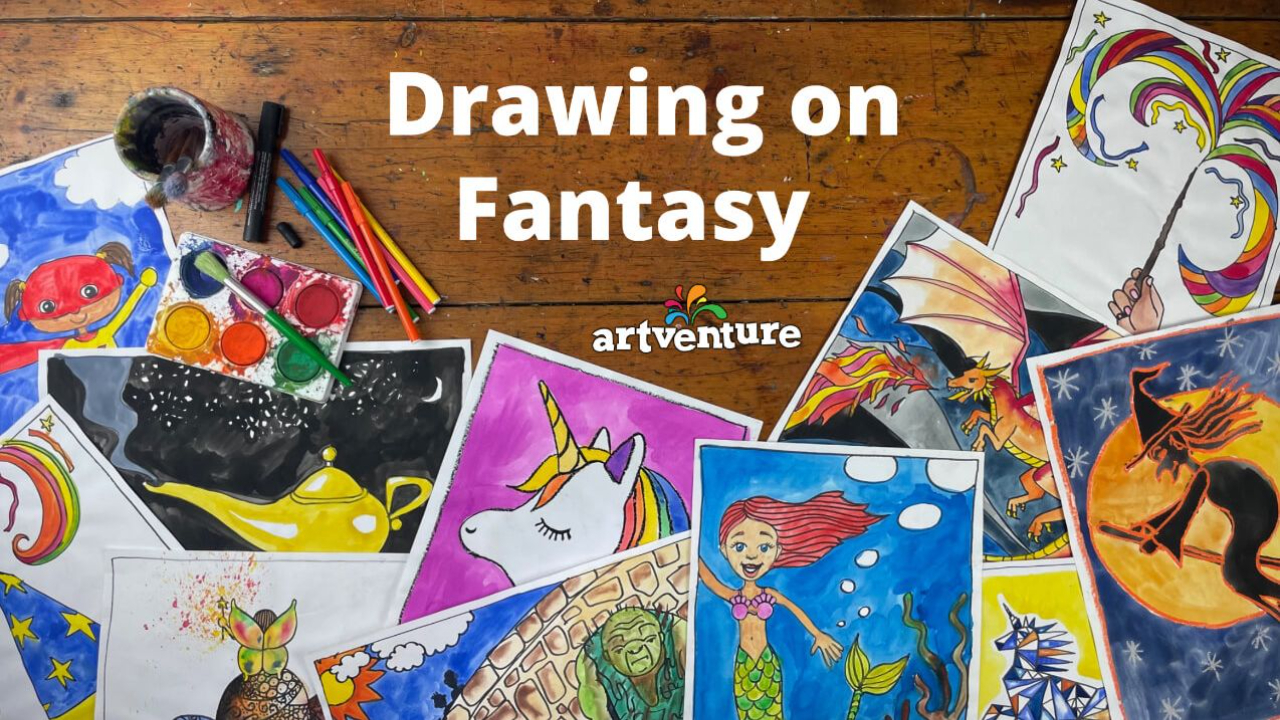Drawing on Fantasy: Creative Art Lessons for Kids and Teens
Jan 19, 2023
Drawing on Fantasy: How Imaginative Art Sparks Creativity in Children
From an early age, children create imaginary creatures, stories, and worlds. What they see in their mind’s eye is shaped by books, shows, and experiences. Fantasy art for kids isn’t just play—it’s a powerful way to help them process emotions, build resilience, and develop creative thinking.
As parents and educators—whether in classrooms or homeschooling—we can nurture imagination while helping children distinguish between fantasy and reality. Drawing mythical creatures, fairy tale characters, and make-believe scenes gives kids a safe space to dream, explore, and express.
Why Fantasy Matters in Children's Art
The Power of Imagination
Imaginative drawing lets children be the star of their own story. Like dreaming while awake, it gives them the ability to create alternate realities—ones where they are in control. This can be a calming tool in stressful moments or simply a joyful form of self-expression.
We are the producer, director, and hero of our imagined world.
Mythical Creatures: Navigating Fear and Fantasy
Think of the mythical figures in childhood stories:
-
Dragons, goblins, trolls, ogres, zombies
-
Centaurs, griffins, leprechauns, werewolves
Many of these creatures can be frightening—but also powerful tools for conversation. With guidance, kids can explore these characters to better understand challenges and emotions. Discussing fictional monsters may help them face real-life fears or difficult social situations.
Older students can take this further:
-
Research the origin of mythical creatures
-
Explore cultural and historical influences behind fantasy beings
Light-Hearted Fantasy: Drawing Joyful Creatures
Let’s not forget the fun side of fantasy art! Children love imagining:
-
Fairies casting spells
-
Mermaids exploring the deep sea
-
Unicorns soaring through the sky (or Pegacorns, if you prefer!)
-
Superheroes saving the day
Drawing these creatures encourages storytelling, emotional freedom, and confidence. It allows children to imagine themselves flying, transforming, or helping others—a creative pathway to resilience and self-belief.
Magical Traditions: When Parents Introduce Fantasy
Fantasy also enters childhood through beloved traditions:
-
The Tooth Fairy, Santa Claus, Easter Bunny
-
Mischievous Elf on the Shelf adventures
These figures bring magic to daily life, but they also raise questions. How do we maintain the wonder without disillusionment? Fantasy is valuable, but requires sensitivity and awareness of:
-
Stereotyping in fairy tales
-
Cultural and family differences
-
The right age and stage for introducing "truth"
Fantasy Reveals Emotion
Art can become a window into a child’s inner world. When kids draw imaginary beings or surreal landscapes, they may reveal:
-
Fears
-
Joy
-
Desires
-
Shame
-
Confidence
Encouraging fantasy drawing helps educators and caregivers better understand and support children. Art allows children to safely express what words sometimes cannot.
Art Activities: How to Draw Fantasy Creatures
Looking to get started? These Artventure lessons are perfect for sparking fantasy and creativity:
-
Bridge Troll
-
Dragon
-
Aliens
-
Fairy
-
Genie
-
Witch or Wizard
-
Magic Wand or Horse
-
Mermaid
-
Prince or Princess
-
Superhero
-
Thumbelina
-
Unicorn
Some lessons focus on mythical characters, others on magical settings or enchanted objects. All are designed to encourage self-expression and storytelling through art.
Sign up for Artventure here or try a FREE lesson today
Nurturing Fantasy Through Art
As parents, teachers, and mentors, we walk a fine line between fostering fantasy and introducing reality. But fantasy and truth can coexist beautifully when handled with care and empathy.
Reading magical stories, discussing artwork, and encouraging imaginative drawing can help kids:
-
Process emotions
-
Build storytelling skills
-
Grow creative confidence
-
Express their personal worldview
Fantasy is a gift—don’t be afraid to let kids dream wildly and draw even wilder.
Author: Erica
Teacher and Artventure Blogger
Give Artventure as a gift
Try Artventure for FREE
Apply for a school or company login

